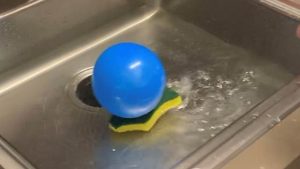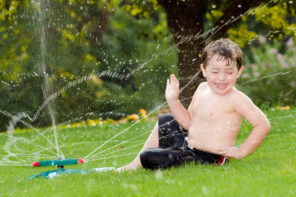You should be doing STEM at home. But wait, you may be thinking, … don’t I need a degree to do that with my kids? Is this going to require lots of expensive materials? How can we do complicated experiments at home?
These are common questions people ask when they hear about bringing science, technology, engineering and math concepts into their homes. And these are all incorrect assumptions we make about STEM. Without even knowing it, you and your family are experiencing STEM opportunities at home every day.
Secret STEM

STEM doesn’t have to be complicated; your kitchen makes a great science lab! For example, have you ever baked cookies with your kids? Well, baking is a series of chemical reactions that result in yummy treats–that’s science. Baking requires that you measure out precise amounts of each ingredient–that’s math. The cookies bake in the oven, which is powered by gas or electricity–that’s technology. Someone tried different quantities and combinations of ingredients in order to make the recipe you use–that’s engineering.
There are thousands of other common activities, chores and things around the house that can easily be turned into an opportunity for your family to engage in STEM. These can range from crafts, experiments or simply observing and asking questions while doing something with your family. STEM at home is all about encouraging your child’s natural curiosity to explore and ask questions about the environment around them.
Experiments…with Benefits
As a parent you may feel overwhelmed by some of the complex concepts that STEM can talk about but, engaging with your child in these activities even if they are outside your comfort zone will accomplish many things including:
- Bonding with your child
- Helping build your child’s confidence in science and math
- Allowing you to choose activities that interest you and your family
- Engaging with the community
- Exploring the outdoors
The United States is a leading nation in technology and innovation, but our students consistently rank below our peer nations in science and math literacy. As our world becomes more reliant on technology, we need to ensure that the United States can provide future workers in the STEM fields.
Currently, US students are shying away from these types of careers, degrees and training and we are having to outsource our workforce. Early exposure to STEM can help to open these doors for your child and make these fields seem more fun and accessible.
Related: STEM Careers: Introducing Kids to Innovation
Easy Does It
Doing STEM activities at home does not and should not try to recreate what your child does in school. These activities should be more relaxed and allow your child to engage in inquiry-based learning; an active form of learning where your child asks questions and seeks answers to things that they are naturally curious about.
You don’t need to conduct formal lessons or experiments. Doing STEM in a comfortable, relaxed environment makes it okay for your children to ask questions and make mistakes without the pressure of a formal learning environment.
Get Started with STEM at Home!
- Encourage kids to read about STEM—Explore PTA’s RIF STEM book collection!
- Make recipes or assist in meal prep
- Visit a local museum
- Watch STEM-focused television
- Learn to code or teach a family member how to code
- Observe a repairman or handyman next time they come to your house and encourage your child to ask questions when appropriate
- Use National PTA’s STEM @ Home activities
National PTA is working hard to create a series of activities for your family to do at home that follow the NGSS (Next Generation Science Standards) guidelines. Our STEM @ Home page includes detailed instruction guides, step by step photos and videos. Many of these activities include extension questions so your child can build on the skills from the activity. All our activities can be completed with common items you have at home or can be purchased at a regular grocery store.
Try This Sample Activity!
Balloon Powered Boat
Items Needed:

- Sponge
- Balloon
- Straw
- Sink, bathtub or kiddie pool for your boat
- Rubber Band
- Knife or Scissors
Directions:
- Make a point on one end of your sponge by cutting off two triangle-shaped sections.
- Cut a small slit in the middle of the sponge, this is where your straw and balloon will go
- Insert the Balloon through the top of the sponge
- Insert the straw into the bottom of the balloon and use the rubber band to make sure the straw and balloon are well connected.
- Blow up your balloon through the straw and hold it closed until your boat is in the water.
- Now let go and watch your boat go!
Go to PTA.org/STEM for more great ideas.
Margaux Seyler-Schmidt taught middle and high school science for several years and is the current Bayer STEM + Families Fellow at National PTA.





